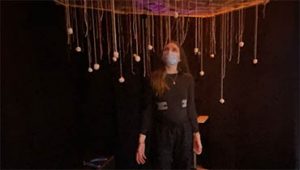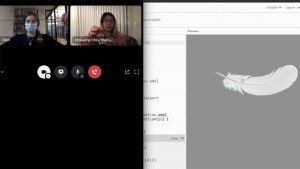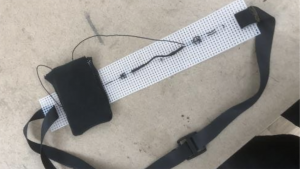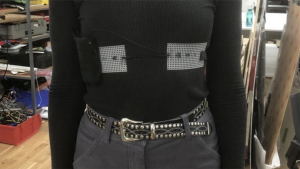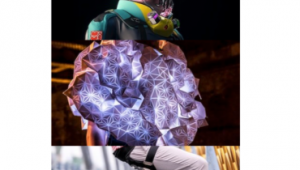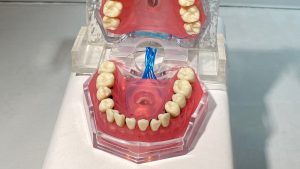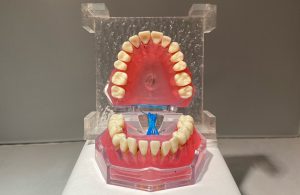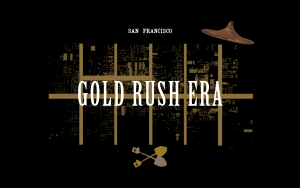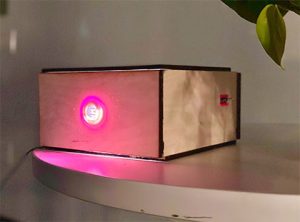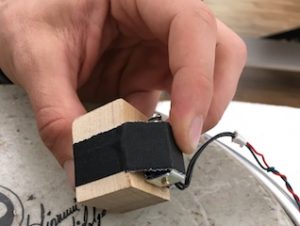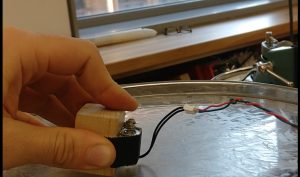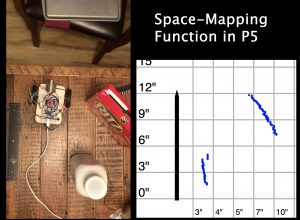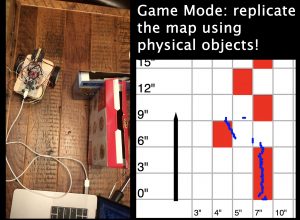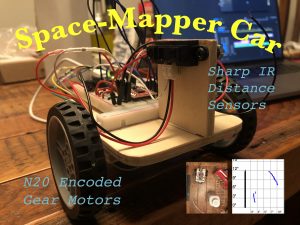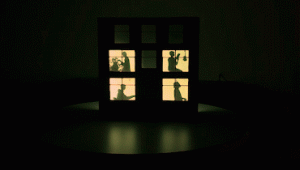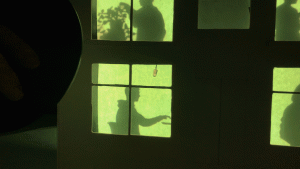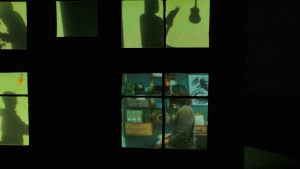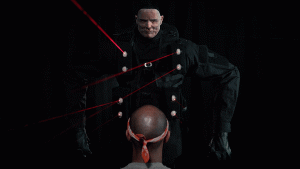SMC is an excessively small remote-controlled car that uses IR distance sensors to scan any objets in its surrounding area and map them out on screen.
Yonatan Rozin
https://youtu.be/i3Ywkyw1BDQ
Description
Space-mapper car is a tiny car––less than 5×9″ large––that uses IR distance sensors to detect walls and objects in its surrounding area and map them out on screen. Using two N20 encoded gear motors, the car can accurately track its movement speed and angle and transmit them through serial communication to p5.js, which can use the information, along with the data from its 2 Sharp IR distance sensors, to gradually piece together a rough map of the space.
The user can choose between 2 modes, each curating a different interaction between the physical space and the on-screen map. In the first mode, the car will fill out a map of its surrounding space on screen, as described above. In the second, more entertaining mode, a path will be drawn on screen for the robot to follow, and a series of lines will be drawn parallel to the prescribed path. The user will have to place a series of objects along the car's physical path in order to match the on-screen map as best as possible. The two modes therefore allow for bi-directional interaction between the car's physical space and its on-screen replication; the physical space dictates the on-screen map in the first mode, and vice-versa in the second mode.
ITPG-GT.2233.00002, ITPG-GT.2301.00006
ICM, Intro to Phys. Comp.
VR\\\\\\\\\\\\\\\\\\\\\\\\\\\\\\\\\\\\\\\\\\\\\\\\\\\\\\\\\\\\\\\\\\\\\\\\\\\\\\\\\\\\\\\\\\\\\\\\\\\\\\\\\\\\\\\\\\\\\\\\\\\\\\\\\\\\\\\\\\\\\\\\\\\\\\\\\\\\\\\\\\\\\\\\\\\\\\\\\\\\\\\\\\\\\\\\\\\\\\\\\\\\\\\\\\\\\\\\\\\\\\\\\\\\\\\\\\\\\\\\\\\\\\\\\\\\\\\\\\\\\\\\\\\\\\\\\\\\\\\\\\\\\\\\\\\\\\\\\\\\\\\\\\\\\\\\\\\\\\\\\\\\\\\\\\\\\\\\\\\\\\\\\\\\\\\\\\\\\\\\\\\\\\\\\\\\\\\\\\\\\\\\\\\\\\\\\\\\\\\\\\\\\\\\\\\\\\\\\\\\\\\\\\\\\\\\\\\\\\\\\\\\\\\\\\\\\\\\\\\\\\\\\\\\\\\\\\\\\\\\\\\\\\\\\\\\\\\\\\\\\\\\\\\\\\\\\\\\\\\\\\\\\\\\\\\\\\\\\\\\\\\\\\\\\\\\\\\\\\\\\\\\\\\\\\\\\\\\\\\\\\\\\\\\\\\\\\\\\\\\\\\\\\\\\\\\\\\\\\\\\\\\\\\\\\\\\\\\\\\\\\\\\\\\\\\\\\\\\\\\\\\\\\\\\\\\\\\\\\\\\\\\\\\\\\\\\\\\\\\\\\\\\\\\\\\\\\\\\\\\\\\\\\\\\\\\\\\\\\\\\\\\\\\\\\\\\\\\\\\\\\\\\\\\\\\\\\\\\\\\\\\\\\\\\\\\\\\\\\\\\\\\\\\\\\\\\\\\\\\\\\\\\\\\\\\\\\\\\\\\\\\\\\\\\\\\\\\\\\\\\\\\\\\\\\\\\\\\\\\\\\\\\\\\\\\\\\\\\\\\\\\\\\\\\\\\\\\\\\\\\\\\\\\\\\\\\\\\\\\\\\\\\\\\\\\\\\\\\\\\\\\\\\\\\\\\\\\\\\\\\\\\\\\\\\\\\\\\\\\\\\\\\\\\\\\\\\\\\\\\\\\\AR,Play/Games

